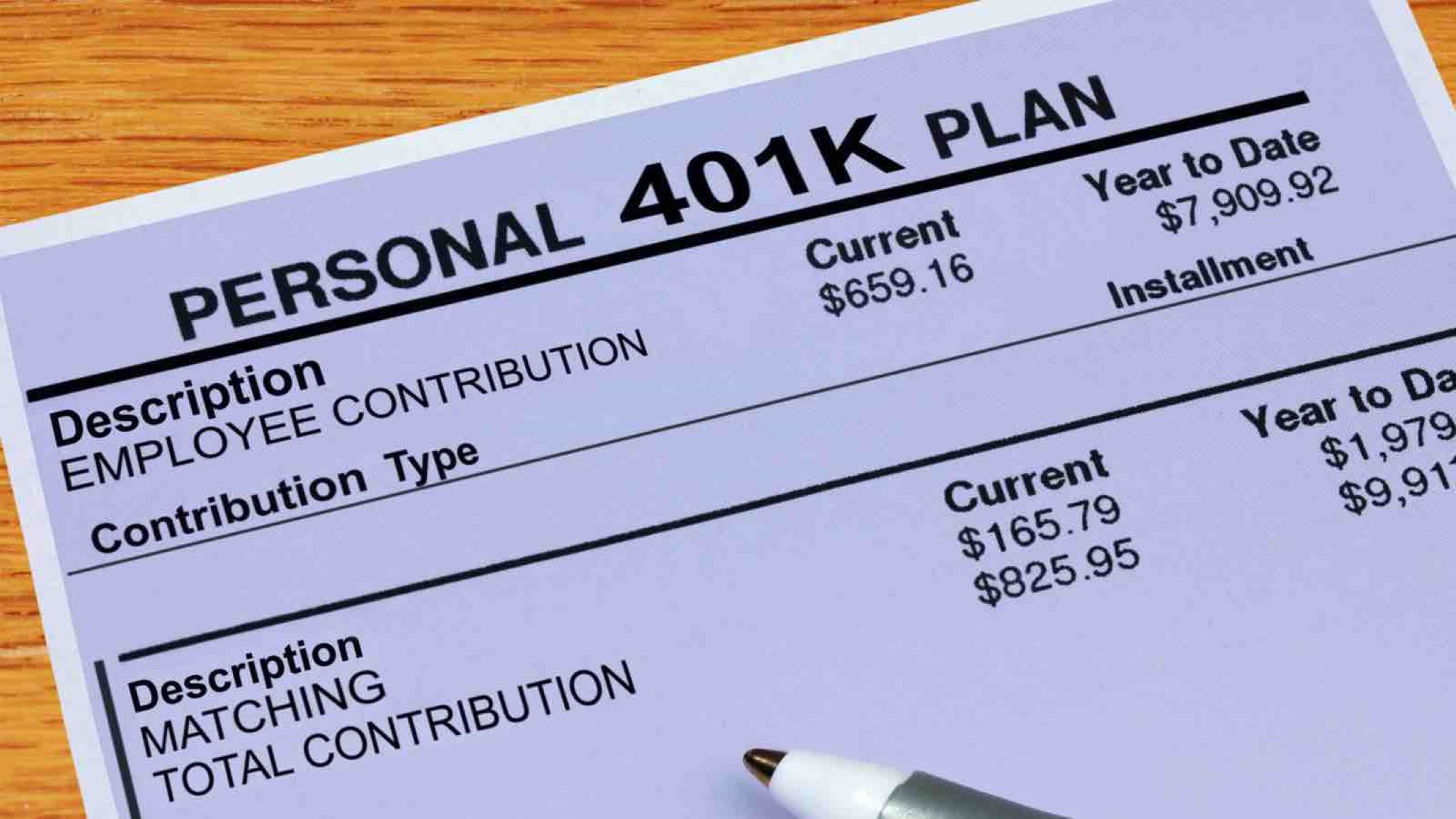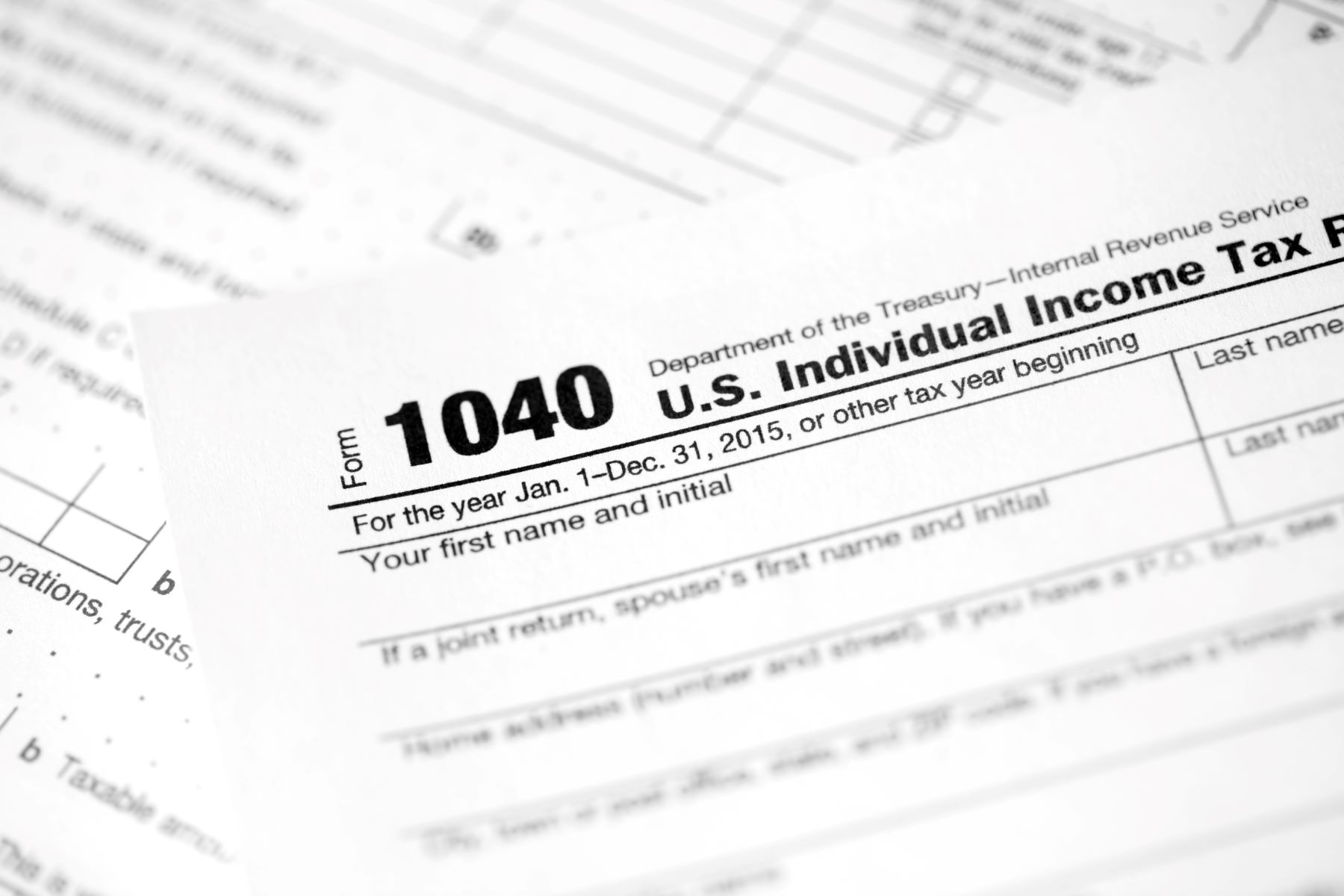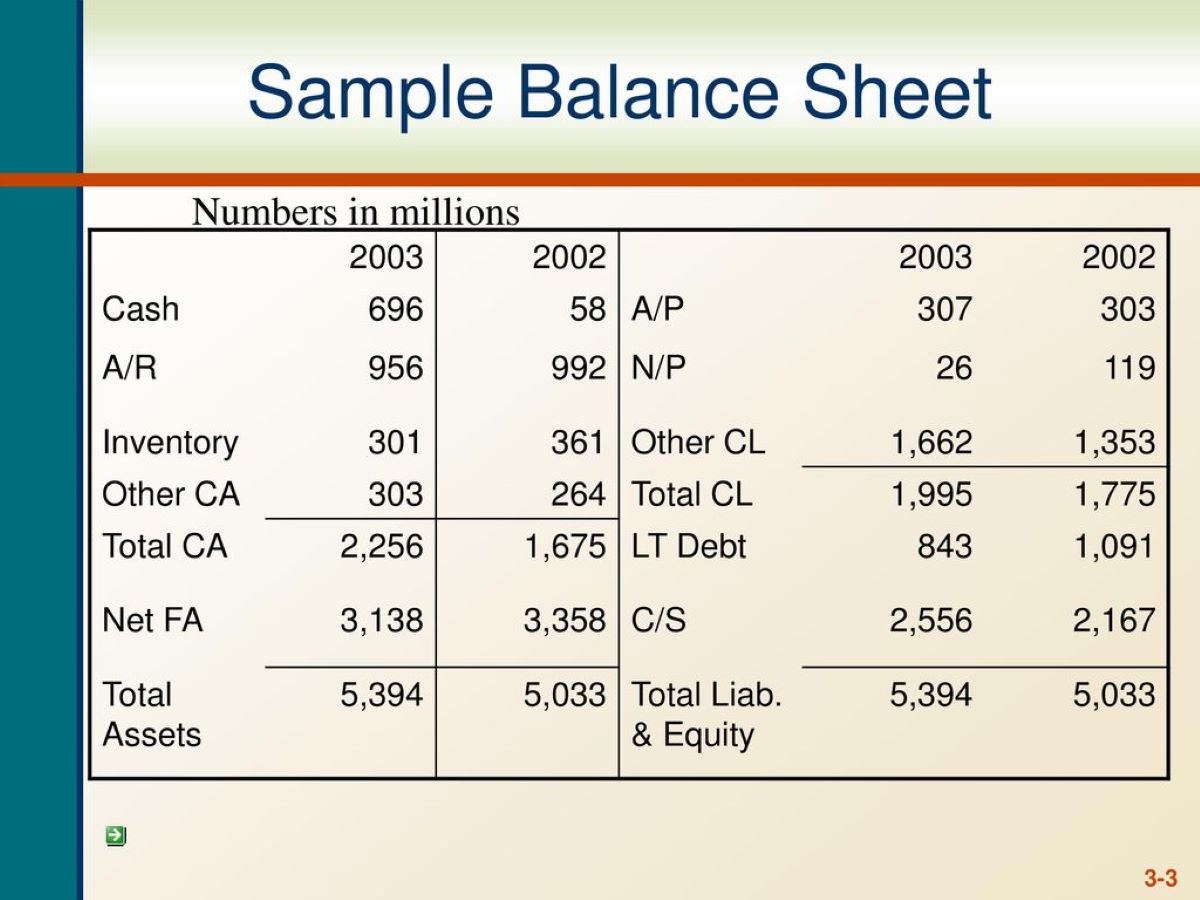

Finance
What Is Maximum 401K Contribution For 2014
Published: October 17, 2023
Find out the maximum 401K contribution for 2014 and optimize your finance planning. Plan for a secure retirement with this valuable financial information.
(Many of the links in this article redirect to a specific reviewed product. Your purchase of these products through affiliate links helps to generate commission for LiveWell, at no extra cost. Learn more)
Table of Contents
Introduction
Planning for retirement is a crucial aspect of financial well-being. One of the most common retirement savings options available in the United States is a 401(k) plan. A 401(k) is a tax-advantaged retirement account sponsored by employers that allows employees to save and invest a portion of their income for their future.
In this article, we will explore the maximum contribution limits for a 401(k) plan in the year 2014. We will also discuss the difference between traditional and Roth 401(k) plans, as well as the benefits of contributing to a 401(k) account. Additionally, we will provide tips on how to maximize your 401(k) contributions to make the most of this valuable retirement savings tool.
Whether you’re just starting out in your career or nearing retirement, understanding the ins and outs of 401(k) contributions is essential. By taking advantage of this retirement savings option, you can build a solid financial foundation for your golden years.
So, let’s dive in and explore the maximum 401(k) contribution limits for the year 2014
What is a 401(k) plan?
A 401(k) plan is a retirement savings account offered by many employers in the United States. It is named after the section of the Internal Revenue Code that governs these types of plans. The purpose of a 401(k) plan is to allow employees to save for their retirement while enjoying certain tax advantages.
With a 401(k) plan, employees have the option to contribute a portion of their pre-tax income to the account. This means that the money is taken out of their paycheck before taxes are calculated, reducing their taxable income and potentially lowering their overall tax liability. The contributions grow tax-deferred, meaning that individuals do not pay taxes on the growth of their investments until they make withdrawals in retirement.
Many employers also offer matching contributions to encourage participation in the 401(k) plan. Typically, an employer will match a percentage of an employee’s contribution, up to a certain limit. This is essentially free money that employees can take advantage of to boost their retirement savings.
Another important feature of a 401(k) plan is its portability. If an employee changes jobs, they can typically choose to roll over their 401(k) balance into a new employer’s plan or transfer it into an individual retirement account (IRA). This flexibility allows individuals to continue building their retirement savings, regardless of their employment situation.
It’s crucial to note that there are restrictions on when individuals can access the funds in their 401(k) account. Generally, individuals cannot withdraw money from their 401(k) until they reach the age of 59 ½ without incurring a penalty. However, there are a few exceptions to this rule, such as financial hardship or disability.
Overall, a 401(k) plan is a powerful tool for retirement savings. It allows individuals to contribute to their future financial security with the added benefit of potential employer matching contributions and tax advantages.
Contribution limits for a 401(k) in 2014
When it comes to contributing to a 401(k) plan, it’s important to be aware of the contribution limits set by the Internal Revenue Service (IRS). These limits determine the maximum amount of money that an individual can contribute to their 401(k) account in a given year. Understanding these limits is crucial to make the most of your retirement savings.
In 2014, the maximum contribution limit for a 401(k) plan was $17,500 for individuals under the age of 50. This means that an individual could contribute up to $17,500 of their pre-tax income to their 401(k) account throughout the year. It’s important to note that this limit applies to the employee’s contributions only and does not include any employer matching contributions.
For individuals aged 50 or older, the IRS allows for catch-up contributions, which allows them to contribute additional funds to their 401(k) plan. In 2014, the catch-up contribution limit was $5,500. This means that individuals aged 50 or older could contribute a total of $23,000 ($17,500 + $5,500) to their 401(k) account for the year.
It’s worth mentioning that these contribution limits are subject to change each year, so it’s essential to stay informed about any updates or adjustments made by the IRS. Failure to adhere to these limits may result in tax penalties or the need to withdraw excess contributions from the account.
Additionally, it’s important to note that these limits apply to individual 401(k) accounts. If both spouses are eligible to contribute to a 401(k) plan, each individual can contribute up to the maximum limit, effectively doubling the total household contribution.
Contributing the maximum allowable amount to your 401(k) plan can have significant long-term benefits. By taking advantage of these limits, you have the opportunity to maximize your retirement savings and potentially accumulate a substantial nest egg over time.
Now that we understand the contribution limits for a 401(k) plan in 2014, let’s explore the different types of 401(k) plans available and the benefits they offer.
Traditional vs. Roth 401(k)
When it comes to contributing to a 401(k) plan, individuals have the option to choose between a traditional 401(k) and a Roth 401(k) account. Each option has its own advantages and considerations, so it’s essential to understand the differences between them before making a decision.
A traditional 401(k) plan allows individuals to contribute a portion of their pre-tax income to their retirement account. This means that the contributions are made before taxes are calculated, reducing the individual’s taxable income for the year. The money grows tax-deferred, meaning that individuals only pay taxes when they withdraw funds from the account during retirement.
On the other hand, a Roth 401(k) plan allows individuals to contribute funds on an after-tax basis. This means that the contributions are made with income that has already been taxed. While this may seem less advantageous at first, the key benefit of a Roth 401(k) is that all qualified withdrawals in retirement are tax-free.
So, what are the key differences between the two options?
- Tax Implications: With a traditional 401(k), contributions are tax-deductible, which can lower your taxable income in the present. However, withdrawals in retirement are taxed as ordinary income. In contrast, Roth 401(k) contributions are made with after-tax income, so they don’t provide immediate tax benefits. However, qualified withdrawals in retirement are tax-free.
- Income Eligibility: Traditional 401(k) plans have no income limits, meaning that anyone who is eligible to participate in their employer’s plan can make contributions. On the other hand, Roth 401(k) plans have income restrictions, and individuals with higher incomes may not be eligible to contribute.
- Required Minimum Distributions (RMDs): Traditional 401(k) plans require individuals to start taking required minimum distributions (RMDs) once they reach the age of 72. This means that individuals must withdraw a certain amount from their account each year and pay taxes on those withdrawals. Roth 401(k) plans, however, do not have RMDs during the account holder’s lifetime, allowing for more flexibility in managing retirement income.
- Employer Matching: Both traditional and Roth 401(k) plans can receive employer matching contributions. However, it’s crucial to note that employer contributions are made on a pre-tax basis and will be taxed upon withdrawal in a traditional 401(k). In a Roth 401(k), employer contributions are also made with after-tax income, but the earnings will still be tax-free upon qualified withdrawal.
Choosing between a traditional and Roth 401(k) depends on factors such as your current and future tax situation, financial goals, and personal preferences. It’s advisable to consult with a financial advisor to assess your individual circumstances and determine which option is most suitable for you.
Now that we understand the differences between traditional and Roth 401(k) plans, let’s move on to exploring the catch-up contributions available for those aged 50 and older.
Catch-up contributions for those aged 50 and older
As individuals approach their 50s, it becomes even more crucial to ramp up their retirement savings. To encourage older individuals to boost their retirement funds, the IRS allows for catch-up contributions in 401(k) plans. These catch-up contributions provide individuals aged 50 and older with the opportunity to contribute additional funds to their retirement accounts above the regular contribution limits.
In 2014, the catch-up contribution limit for individuals aged 50 and older was $5,500. This means that on top of the regular contribution limit, which was $17,500 for that year, individuals aged 50 and older could contribute an additional $5,500, for a total of $23,000.
The purpose of catch-up contributions is to help individuals who may have fallen behind in their retirement savings due to various reasons, such as starting to save for retirement later in life or experiencing financial setbacks. It allows them to make up for lost time and potentially bridge the gap in their retirement funds.
Contributing the catch-up amount can have a significant impact on an individual’s retirement savings. It not only provides the opportunity to save more money but also allows for potential additional tax advantages. By taking advantage of catch-up contributions, individuals can potentially benefit from employer matching contributions on the additional amount contributed, effectively boosting their retirement savings even further.
It’s important to note that catch-up contributions are available in both traditional and Roth 401(k) plans. However, they count towards the overall contribution limit, meaning that the total amount contributed, including catch-up contributions, cannot exceed the annual limit set by the IRS.
Keep in mind that the catch-up contribution limit is subject to change each year, so it’s essential to stay informed about any adjustments made by the IRS. By taking advantage of catch-up contributions, individuals aged 50 and older have the opportunity to make significant strides in their retirement savings and increase their financial security in their golden years.
Now that we understand catch-up contributions, let’s explore the tax advantages of contributing to a 401(k) account.
Tax advantages of contributing to a 401(k)
Contributing to a 401(k) offers significant tax advantages that can help individuals build their retirement savings more efficiently. Understanding these tax benefits can motivate individuals to take full advantage of their employer-sponsored retirement plan.
1. Tax-deferred contributions: One of the primary tax advantages of a 401(k) plan is the ability to contribute pre-tax income. When individuals make contributions to their 401(k), the amount is deducted from their taxable income for that year. This reduces their overall tax liability and can result in immediate tax savings.
2. Tax-deferred growth: In addition to pre-tax contributions, the earnings and investment gains within a 401(k) account are also tax-deferred. This means that individuals do not have to pay taxes on the growth of their investments until they make withdrawals in retirement. This tax-deferred growth can accelerate the growth of their retirement savings over time.
3. Employer matching contributions: Many employers offer matching contributions to incentivize their employees to save for retirement. These matching contributions are typically made on a pre-tax basis, which allows employees to receive additional funds in their 401(k) account without incurring immediate tax consequences.
4. Lower taxable income: Since contributions to a 401(k) plan are made with pre-tax income, they reduce an individual’s taxable income for the year. This can potentially put individuals in a lower tax bracket, resulting in further tax savings. It’s important to note that individuals will eventually pay taxes on their 401(k) withdrawals in retirement, but they may be in a lower tax bracket at that time.
5. Potential for Roth 401(k) tax-free withdrawals: If individuals choose to contribute to a Roth 401(k) plan, they make after-tax contributions. However, qualified withdrawals from a Roth 401(k) in retirement are tax-free. This can be advantageous for individuals who anticipate being in a higher tax bracket in their retirement years.
Overall, the tax advantages of contributing to a 401(k) make it a powerful retirement savings tool. By taking advantage of these tax benefits, individuals can optimize their contributions and potentially save more money for their future.
Now that we understand the tax advantages of contributing to a 401(k), let’s explore some strategies to maximize your 401(k) contributions.
Ways to maximize your 401(k) contributions
Maximizing your 401(k) contributions is an effective way to build a substantial retirement savings nest egg. By taking advantage of the following strategies, you can make the most of your employer-sponsored retirement plan and work towards a financially secure future.
1. Contribute up to the maximum limit: Aim to contribute the maximum amount allowed by the IRS each year. In 2014, the limit for individuals under the age of 50 was $17,500. By contributing the maximum, you maximize the tax advantages and potential employer matching contributions.
2. Start contributing early: The power of compound interest makes it advantageous to start contributing to your 401(k) as early as possible. Even small contributions made early on can grow significantly over time. The longer your money has to compound, the more it can accumulate in the long run.
3. Take advantage of employer matching contributions: If your employer offers a matching contribution, make sure to contribute enough to receive the full match. This is essentially free money that can significantly boost your retirement savings. Be sure to check with your employer about the matching policy and contribute enough to maximize this benefit.
4. Consider catch-up contributions: If you are aged 50 or older, take advantage of catch-up contributions. In 2014, individuals in this age group were allowed an additional $5,500 contribution. These extra contributions can help bridge any savings gaps and accelerate your retirement savings.
5. Automate your contributions: Set up automatic contributions from your paycheck to your 401(k) account. By automating your contributions, you ensure that a portion of your income goes directly towards your retirement savings, making it easier to consistently save and eliminate the temptation to spend the money elsewhere.
6. Increase contributions with salary raises: Whenever you receive a salary raise, consider increasing your 401(k) contributions. By diverting a portion of your raise towards your retirement savings, you can boost your contributions without impacting your everyday budget.
7. Re-evaluate your budget: Take a close look at your monthly expenses and identify areas where you can cut back. By reallocating some of these savings towards your 401(k), you can increase your contributions without sacrificing your overall financial well-being.
8. Stay informed: Keep up to date with any changes to the contribution limits and employer matching policies. Regularly review your retirement plan and make adjustments as needed to ensure you are maximizing your contributions and taking advantage of all available benefits.
By implementing these strategies, you can make significant progress in maximizing your 401(k) contributions and building a robust retirement fund. Remember, every dollar you contribute today can make a substantial difference in your financial future.
Now that we have explored ways to maximize your 401(k) contributions, let’s conclude our discussion on the importance of utilizing this retirement savings tool.
Conclusion
Planning for retirement is a lifelong journey, and having a comprehensive understanding of your 401(k) plan can significantly impact your financial well-being in the future. In this article, we explored the maximum contribution limits for a 401(k) plan in 2014, the difference between traditional and Roth 401(k) plans, the benefits of catch-up contributions for individuals aged 50 and older, and the tax advantages of contributing to a 401(k) account.
Contributing to a 401(k) offers numerous advantages, including tax-deferred contributions, tax-deferred growth, potential employer matching contributions, lower taxable income, and even tax-free withdrawals in the case of Roth 401(k) accounts. Taking advantage of these benefits can help you make significant strides towards building a substantial retirement savings.
Additionally, we discussed strategies to maximize your 401(k) contributions, such as contributing up to the maximum limit, starting early, leveraging employer matching contributions, considering catch-up contributions, automating contributions, increasing contributions with salary raises, re-evaluating your budget, and staying informed about any changes to contribution limits or matching policies.
By implementing these strategies and being proactive in managing your retirement savings, you can optimize your 401(k) contributions and work towards a financially secure future. Remember, the more you contribute now, the more your money can grow and compound over time, providing you with the necessary funds to enjoy a comfortable retirement.
Whether you’re just starting your career or nearing retirement age, it’s never too early or too late to take advantage of the benefits offered by a 401(k) plan. Consult with a financial advisor to understand how your 401(k) fits into your overall retirement plan and make informed decisions to secure your financial future.
In conclusion, by maximizing your 401(k) contributions, you are taking control of your retirement savings and setting yourself on a path towards financial independence during your golden years. The decisions you make today will shape your financial future, so start planning and saving for retirement now to enjoy a fulfilling and worry-free retirement down the road.














